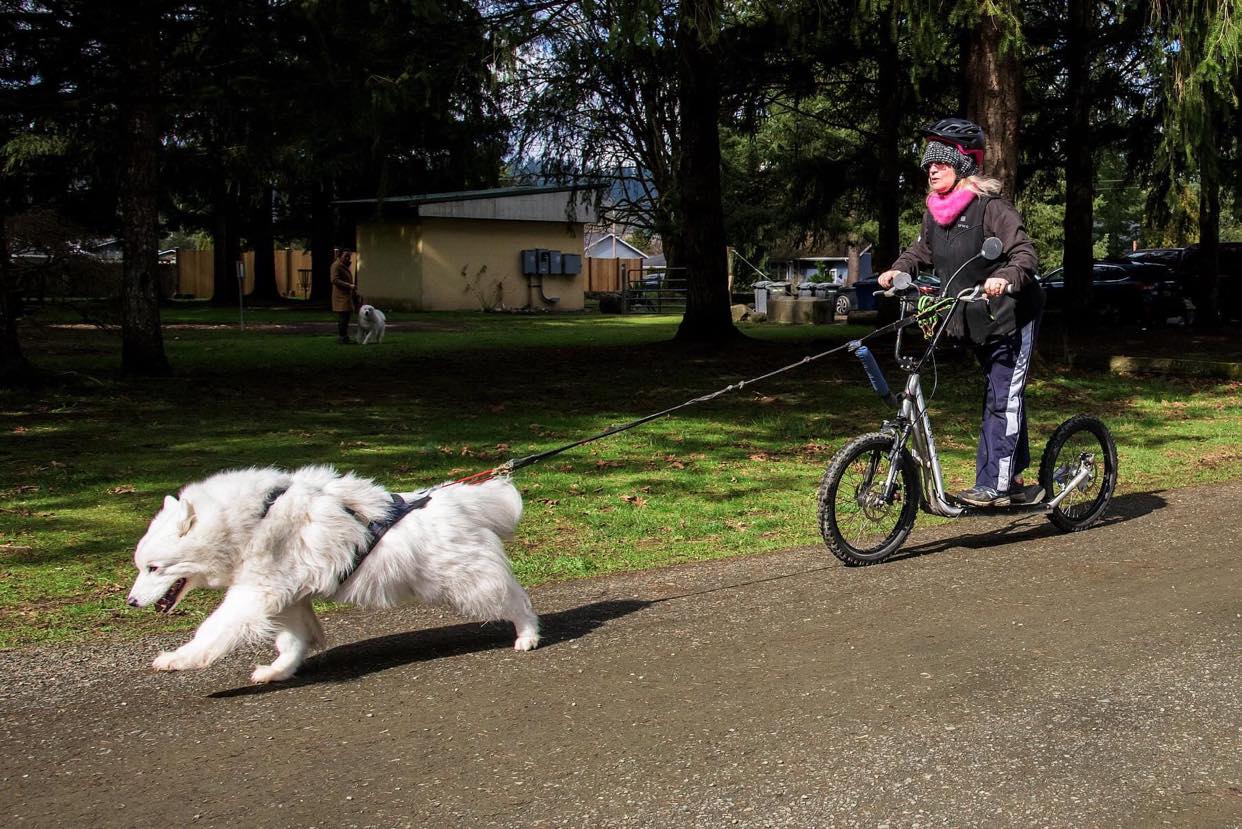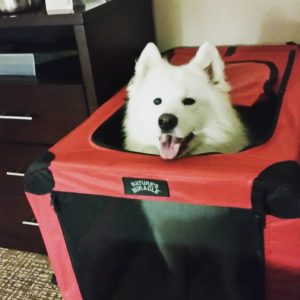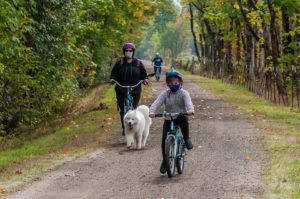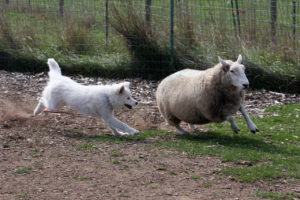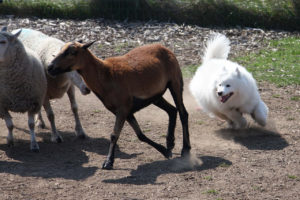Therapy Dog Helps Ease The Pain
Therapy dog helps ease the pain
Published: December 27, 2005
By PAUL DAQUILANTE
Of the News-Register
Hurricane Rita would pummel Florida, Louisiana and Texas in the weeks to come, causing widespread death and destruction.
So, in August, Yamhill Communications Agency 911 dispatcher Kaye Sawyer and her Samoyed, Maverick, trained with the National Organization for Animal Assisted Crisis Response Team headquartered in Eugene.
“We’re called out by the National Red Cross,” Sawyer said. “We’re on the national call-out list.”
The call eventually came. Sawyer and Maverick, a highly trained therapy dog team, headed off to the hurricane ravaged Gulf Coast.
Four days of intense training in Eugene prepared them and other teams for the challenges that lay ahead in the devastated Texas towns of Beaumont, Port Arthur and Sabine Pass.
That’s where they were dispatched, to not only aid and comfort residents of those communities who were victims of the deadly disaster, but first-responders – emergency medical services, fire and police – too.
The training prepared Sawyer and Maverick well.
It began with time in the classroom for the pair. They rode a bus together from one end of Eugene to the other.
At Mahlon Sweet Airport in Eugene, they passed through security, and Sawyer said she learned how to “squeeze a 55-pound dog under an airplane seat.” Maverick also took his first escalator ride at the airport.
Another day was spent at the Eugene Fire Training Center, where Maverick was exposed to being around apparatus, like hoses, saws, jack hammers and fire extinguishers, while they were being used.
“I guess the part of the training that bothered me the most was spending dinner at Izzy’s with seven dogs at one table,” Sawyer said in a YCOM newsletter. “Trying to keep the dogs under the table while there’s food everywhere was a major feat and stress in itself.”
Sawyer said Maverick tried to “wash the dishes and did a good job of vacuuming” before they left the restaurant.
Training concluded with a mock earthquake disaster. Sawyer and Maverick interacted with quake victims. Participants had been instructed to act out in various ways.
Some argued with each other. Others said they didn’t want Maverick near them. Some did not want to talk with Sawyer but wanted to pet Maverick.
Others used him to help them cope with the disaster. The handler and dog were evaluated on how they dealt with each situation.
The National Organization for Animal Assisted Crisis Response Team was founded by Cindy Ehlers of Eugene. Her hope was to train teams to be able to provide emotional and ongoing support to people affected by crisis and disaster.
Team members aided victims of the Thurston High School shooting in Springfield several years ago. Ehlers traveled to New York City following the Sept. 11 terrorist attacks.
When the training ended, Sawyer knew that she and Maverick were ready to assist wherever they were needed. There was an immediate need in the Gulf Coast. They stayed a week in Texas.
They worked out of Beaumont. An events center, which Sawyer compared to the Rose Garden in Portland, housed representatives from various agencies, including the Federal Emergency Management Agency and the National Red Cross.
There were service centers in neighboring towns, where victims were fed and received financial assistance. Sawyer, Maverick and the other therapy dog teams assisted hurricane victims and crisis workers at those centers.
“Maverick was a tool to get people to talk,” Sawyer said. “The dogs were used to get the workers to talk, to vent and get their emotions out. It was a mental health issue.
“A lot of police officers and firefighters would not talk to mental health workers,” she said. “They couldn’t get them to open up. And they needed to do that.”
Depression was a huge issue among the first-responders, according to Sawyer. There were suicides among the workers. Some police officers and firefighters quit their jobs.
Sabine Pass, 30 miles southeast of Beaumont and south of Port Arthur, was one of the hardest hit areas Sawyer and Maverick visited.
“Ninety percent of the housing in Sabine Pass was destroyed,” Sawyer said. “To look at the houses, they appeared fine. But they had been severely water damaged.”
The destruction in Port Arthur was not as great and the situation was even better in Beaumont.
Wherever Sawyer and Maverick traveled, they did all they could to aid and comfort stricken residents and service center workers. While Sawyer helped feed people and talked to them, Maverick made the rounds. He received plenty of hugs and affection. People were drawn to him.
“He looks like a huge teddy bear,” Sawyer said.
She and Maverick visited a police department and a 911 dispatch center in Port Arthur, where several employees lost their homes. Fellow YCOM employees collected money, sent it with Sawyer on her trip and she left it for the Port Arthur dispatchers.
Sawyer and Maverick learned a great deal through their training and the experience in Texas. When another disaster strikes, she said they would like to assist again, if called upon.
“She deserves a lot of credit for her involvement in this,” said Janis Cameron, second-in-command at YCOM.
Sawyer began as a part-time dispatcher in 1984. She later worked at Newberg’s dispatch center and for Clackamas Community Communications. She took a full-time job at YCOM in 1990.
She is the senior communications training officer, peer support contact and president of the YCOM Employees Association.
“She’s a highly respected dispatcher and call taker,” Cameron said. “I can’t say enough about all she does for YCOM and its employees.”


